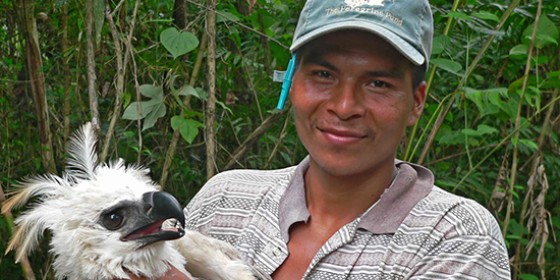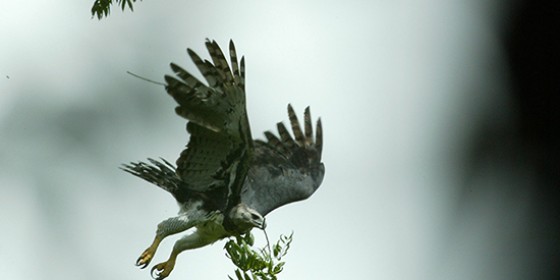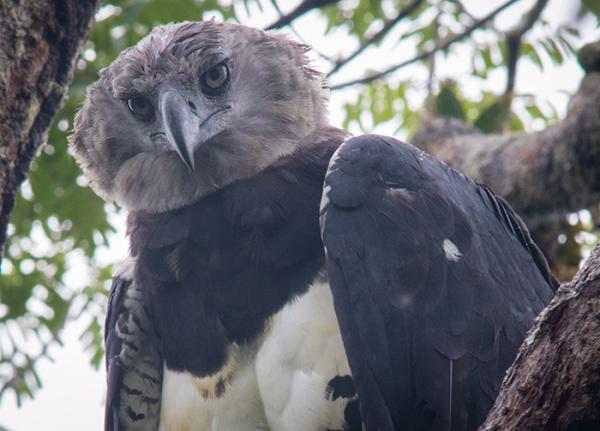With their long, curved beaks and talons the size of grizzly bear claws, Harpy Eagles are the largest and most powerful eagles in the world. These commanding birds swoop through the rain forests of Latin America, routinely picking up prey weighing more than 15 pounds—and sometimes equal to their own weight.
Although Harpy Eagles maintain healthy populations in South America, the outlook is troubling in Central America, where in most countries they are listed as Critically Endangered. New roads, slash-and-burn farming, and forest fires threaten to destroy intact rain forests that are crucial to their survival.
Threats to Harpy Eagles

Jose Vargas

The largest known population of Harpy Eagles in Central America is found in Darien Province, Panama, where The Peregrine Fund has been working since 2000 on one of the longest projects ever conducted for the species. Our insights into breeding, dispersal, habitat, diet, and causes of mortality are pivotal in mapping the future of this long-lived, charismatic eagle.
We haven’t worked alone, though—for 18 years we have partnered with local communities in our Darien work. Every year we train Emberá and Wounaan technicians and volunteers who not only conduct field work and help us mount transmitters, but also spread the word within their communities about the value of Harpy Eagles. Emberá and Wounaan people have inhabited the Darien for time immemorial, and their ability to manage development from outside forces is essential to preserving their homeland along with the eagles’ habitat. Our support for the people of Darien is crucial, and assisting with sustainable jobs and education is an integral part of our conservation approach.
As the first organization to ever establish a program to breed Harpy Eagles in captivity and release them to the wild, our familiarity with the species is unmatched.
But we have more to learn to conserve the Harpy Eagle in the chaotic years ahead. We need to understand the degree to which various types of human disturbances affect the eagles’ ability to hunt, establish territories, and reproduce. If factors like habitat fragmentation, tourism, agriculture, and road building limit the population size, we must have solid data to advocate effectively for preserving this high-demand landscape.
Our Darien Conservation initiative, which aims to preserve four million acres of rain forests in Panama, is firmly grounded on the relationships we’ve cultivated for nearly two decades of studying and conserving Harpy Eagles.







